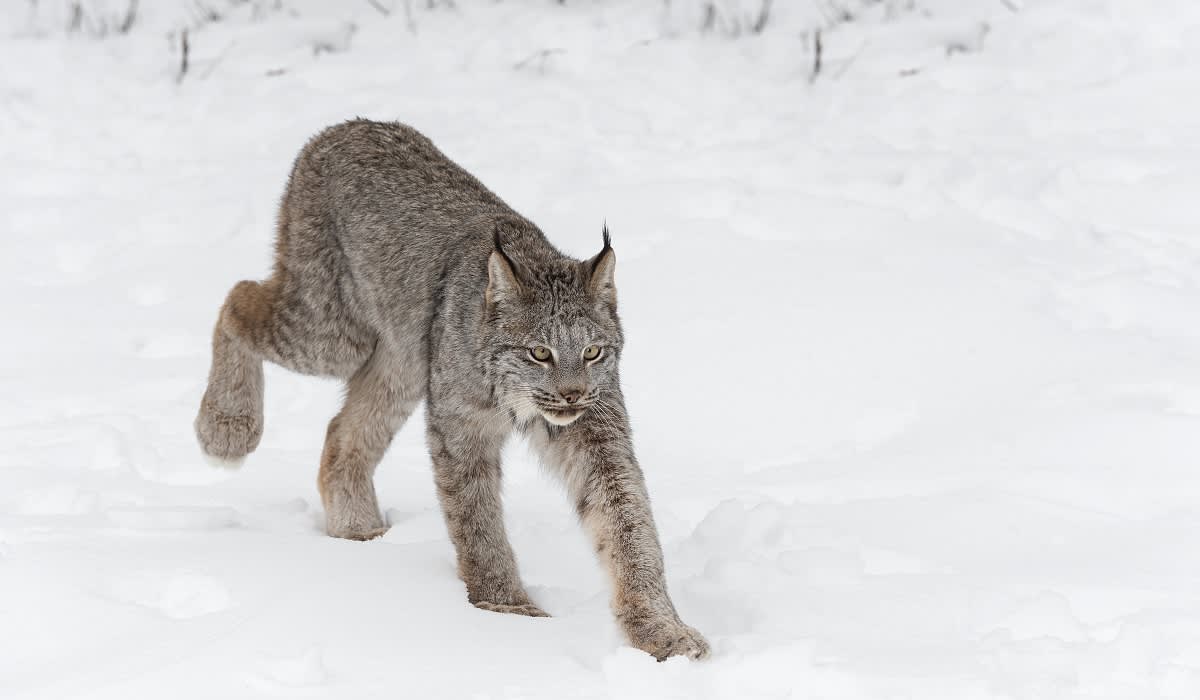Video: Rare Michigan Lynx Sighting in Family’s Backyard
OutdoorHub Reporters 02.21.19

A Lexington, Michigan resident thought nothing of it when he heard his dog barking out the window of his home, figuring it was likely just some deer causing all the commotion. To his surprise, a large cat – possibly a rare Michigan lynx – was strutting across their yard, walking into the trees.
The video going around online was shot by Hunter Soper, 16, around 9 a.m. on February 16. He said the animal appeared to be “looking around,” and “was not a threat.”
Adam Bump, a furbearer specialist for the Michigan DNR, said in a report by The Port Huron Times Herald he’s convinced the cat is a Canada lynx based on a few noticeable physical attributes..
“Generally, lynx appear to have longer legs, much bigger feet, and longer ear tuffs than bobcats,” Bump told Times Herald. “Also, while both species have a black-tipped tail, lynx have black all the way around the tip while bobcats have a white line on the underside of the tip of their tail.”
Hunter’s mom, Monique Soper, told reporters “my husband (Steve Soper) has hunted countless hours on our property and he has never seen anything like that.”
Unsurprising, as lynx (assuming that’s what we’re dealing with here) tend to live the life of a wanderer. Searching for food and shelter, but never really settling on one permanent place to call ‘home.’
Jim Zalenak, species lead for Canada lynx for the U.S. Fish and Wildlife Service, describes them as “highly nomadic.” “You’ll find lynx where their next meal is, with snowshoe hares being a main staple, he continued.”
In the year 2000, lynx were classified as a federally protected species due in large part to trapping and habitat change brought on by timber harvests. However, Zalenak said their threatened species status is now being considered for change because environmental regulations helped preserve lynx habitat.
Terry McFadden, the Michigan DNR wildlife division field operations manager for the southeast region, says bobcats DO in fact roam the area, but you’re best chances for spotting them is in the northern regions of the state and out west.
“They like swamp edges, they like upland forest,” McFadden said.
So, it sounds like the verdict is still technically out on this one, but experts seem to be leaning more in favor of this being a rare Michigan lynx sighting. Pretty neat!

